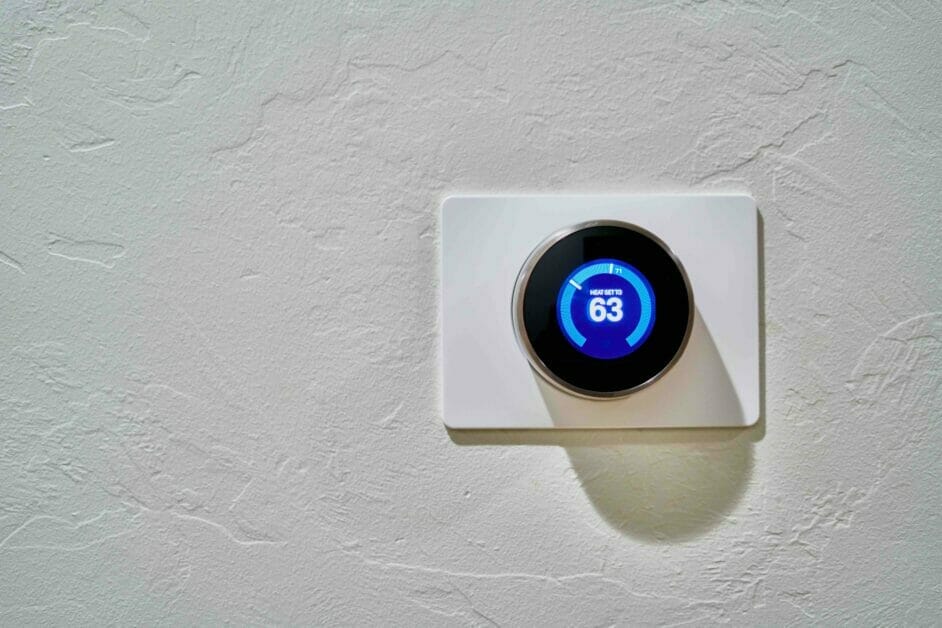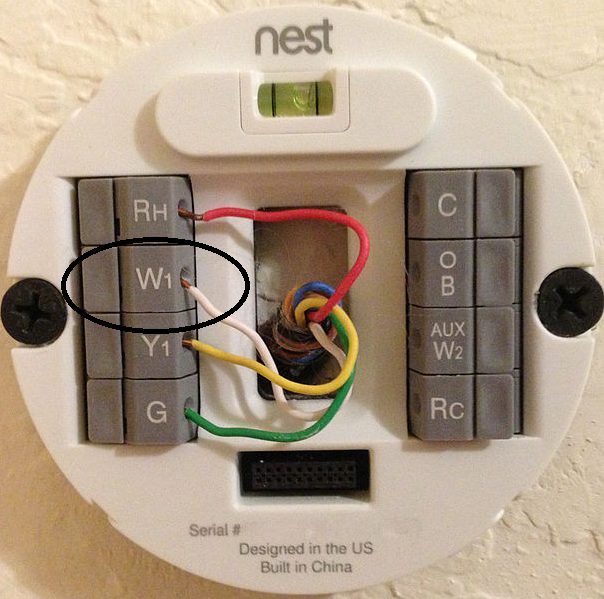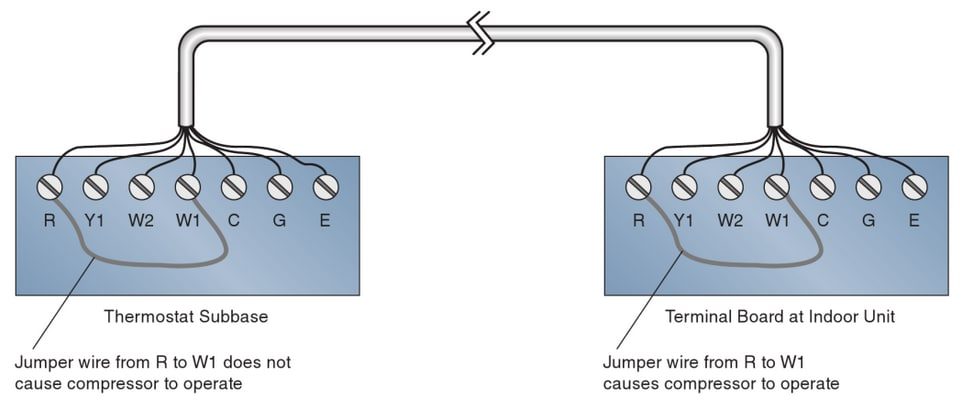What is the W1 Wire on a Thermostat? (What it is and How it Works)

If you’re looking to control your home’s temperature using a thermostat, you’ll need to know what the W1 wire is.
To know this, firstly, we must know how a thermostat is wired. Then, we will look at the role of the w1 wire in thermostats. Continue reading to learn more about the wiring in a thermostat and, specifically, what the W1 wire is for.
W1 means first level heat/cool, indicating that the compressor has turned on. It controls the heating system, like the other W wires in subsequent stages.
Thermostat Wiring
A thermostat is central to temperature-controlling devices for appliances such as air conditioners and furnaces. They are used when it is necessary to regulate the temperature. Mostly, their capability is determined by the performance of the cooling or heating appliances.
Thermostat wires consist of several strands of solid, bare copper wires. They are distinguishable from each other by the colored insulation that covers them. During installation, these wires are connected to a board and transmit data from each wire to the thermostat.
Thermostat Wire Colors
A thermostat base typically consists of 16 sockets.

To expose the colored wires, you may need to remove the thermostat’s control panel. You will usually find certain letters marked on the sockets, such as C, R, Y1, W1, W2, and AUX. They may not be available with two, three, or four wired thermostats.
The wiring scheme is as follows:
Here is the information in chart form:
| Wire Color | Code | Purpose |
|---|---|---|
| Red | R or RC | Power |
| White | W1 or W2 | Heating |
| Yellow | Y1 or Y2 | Air Conditioner |
| Green | G | Fans |
| Blue/Black | C | Common |
| Orange | O | Heat Pump |
- The red wire on the thermostat is usually for power. It is coded as either R or RC.
- The white wire on the thermostat is usually for heating purposes. It is coded as W1 or W2 thermostat wire.
- The yellow wire on the thermostat is usually for an air conditioner. It is coded as Y1 or Y2.
- The green wire on the thermostat is usually for fans. It is coded as G-wire.
- If the thermostat has a C-wire (blue/black), it is known as a common wire and is attached to a common terminal. A C-wire can be either blue or black.
- Sometimes, there is an orange wire on a thermostat for a heat pump. It is coded as O-wire.
Now I will detail more about what the W1 wire is used for.
The Role of the W1 Wire
White Wire (W1/W2/W3)
The main function of the white wires is controlling heat.
In a traditional system, the function of W/W1 is to control the heating system, while W2 helps keep the home warm faster because it is the next stage after W1. W1 means first-level heat. First-level heat is identical to first-level cool. It simply means that the compressor has turned on.
They are always in a gas furnace thermostat, but it is not required for air conditioner thermostats. These wires are mostly used for different heating appliances and heat pumps. W1 is first-stage heat, whereas W2 is second-stage heat. There is also the third stage of heat, which is W3.
So, W, W1, W2, and W3 (if there is one) all control the heating characteristics of your appliance.
Here is the information in chart form:
| Wire Color | Code | Purpose |
|---|---|---|
| White | W1 | First-Stage Heat |
| White | W2 | Second-Stage Heat |
| White | W3 | Third-Stage Heat (if present) |
Testing
The W1 wire can be used for testing along with a jumper wire.
A jumper wire connecting W1 and R at the indoor unit causes the compressor to operate, but the same connection at the sub-base causes it not to operate. (Silberstein, 2015) If a connection is made with Y1 instead, the outdoor unit will always run in heating and cooling modes. (Edwards, 2009)

FAQs
Here are answers to some frequently asked questions.
What is E-W1 on the Thermostat?
E in a thermostat is known as Emergency Heat, whereas W1 means first-level heat.
Sometimes, the thermostat for heat has an E terminal. It is used for switching the emergency heat on or off. It should only be used when it gets very cold, or the heat pump cannot keep your house warm. E-wires are generally connected to W1 terminals.
Is the W/E and W1 Port the Same?
There is no W1 port in some thermostats, but it includes W/E, which is the same as a W1 port. So yes, W/E and W1 are essentially the same.
What type of heat does W1 control?
In a thermostat, W1 controls the first stage of the heating or cooling process.
What is 2-Wire Thermostat Wiring?
A 2-wire thermostat wiring is only used for a furnace. It does not need a common wire. It is a basic thermostat that consists of two wires. The red wire is used for power, whereas the white wire is used for heating. The color code of a 2-wire thermostat is:
– Red for power
– White for heating purpose (W1 or W2 terminal)
What is 3-Wire Thermostat Wiring?
A 3-wire thermostat is used for water heaters and boilers. It consists of three wires, where the function of the red and white is the same as the 2-wire, with an additional green wire, usually used for fans, that acts as a common wire. The color code of a 3-wire thermostat is:
– Red for power
– White for heating purpose (W1 or W2 terminal)
– Green is used for fans
What is 4-Wire Thermostat Wiring?
In a 4-wire thermostat, there is more flexibility. It is used for heat pumps and HVAC (Heating, Ventilation, and Air Conditioning). It has two additional wires, consisting of yellow and blue. The additional wires are used for cooling purposes. The color code of a 4-wire thermostat is:
– Red for power
– White for heating purpose (W1 or W2 terminal)
– Yellow or blue is used for cooling purposes
References
Eugene Silberstein. Heat pumps, p. 335. Cengage Learning. 2015.
Lloyd Edwards. Heating and air conditioning tips for homeowners, p. 32. Lulu. 2009.
